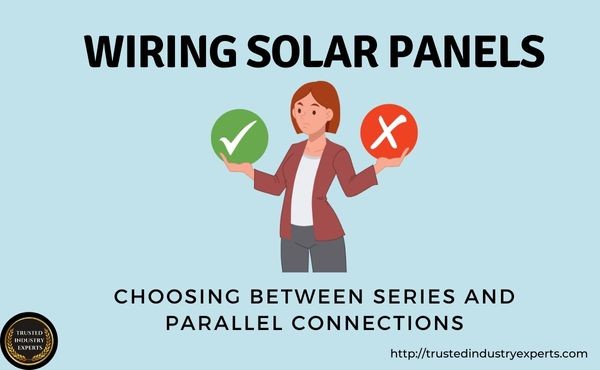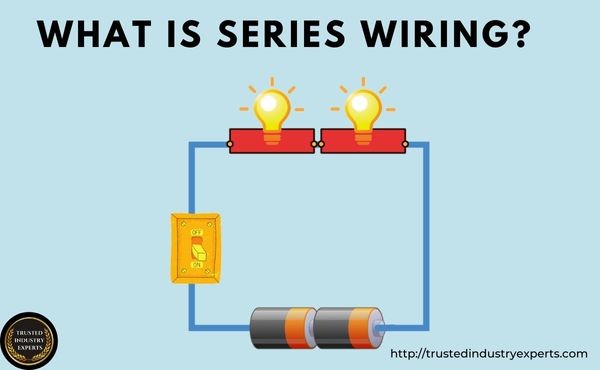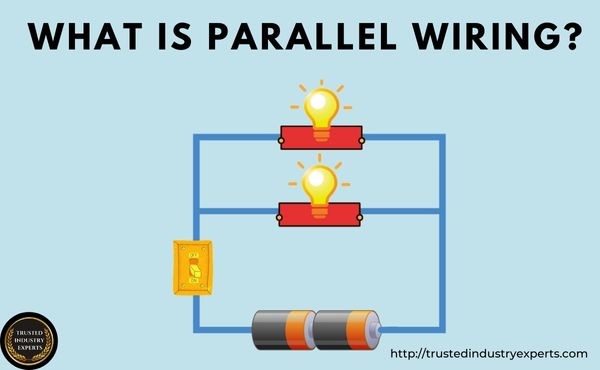Wiring Solar Panels: Choosing Between Series and Parallel Connections

At some point in the process of designing and installing a solar power system, you will need to decide how to wire your solar panels. There are two main options: series and parallel connections. Each method has its own advantages and disadvantages, and the choice depends on various factors, such as the type and size of your solar panels, the number of panels in your array, the charge controller you are using, and the battery bank you are charging.
We will explain the basics of series and parallel wiring, compare their benefits and drawbacks, and provide some tips and best practices for optimizing your solar power output. We will also suggest some scenarios where series or parallel connections may be more appropriate, and provide a mermaid diagram to illustrate the different wiring options.
What is Series Wiring?
In a series connection, you connect the positive terminal of one solar panel to the negative terminal of another panel, and so on, until you reach the end of the array.
The voltage of the array increases with each panel, while the current remains constant.
This means that the total output voltage is equal to the sum of the individual panel voltages, and the total output current is equal to the current of the weakest panel.

Series wiring is a good option when you want to increase the voltage of your system to match the voltage of your charge controller or inverter, or when you have a long distance between your panels, solar pv system and your battery bank. It also simplifies the wiring and reduces the number of connections and fuses needed.
Connecting solar panels in series is a good choice to increase the voltage of your solar panel system, as the total output voltages is equal to the sum of all the voltages of each individual panel. This also simplifies the wiring and reduces the number of connections and fuses needed when wiring multiple solar panels together. Ensure identical wattage and voltage for each solar panel connected in series to prevent inefficiencies.
Properly implementing a series connection can greatly enhance solar panel systems’ efficiency, necessitating careful consideration and planning. However, series wiring has some drawbacks. If one panel in the series gets shaded or damaged, the output of the entire solar array drops to zero, as the current is blocked. Also, the power loss due to mismatched panels or shading is higher than in parallel wiring, as the weakest panel determines the total output.
When connecting all the solar panels in a series, it is important to make sure that each panel has the same wattage, voltage and current ratings as the other panels. If the same panels are not used, then there will be an imbalance in the system which can lead to a decrease in efficiency.
In addition, each panel connected in series should have the same length of wire panels connecting them and be wire solar panels using the same type of cable so that power loss is kept to a minimum. It is also important to use sufficiently rated connectors when wiring panels together as well as appropriate fuse protection for safety.
Ensure efficient and safe functioning of solar system by properly wiring solar panels in series.
What is Parallel Wiring?

In a parallel connection, you connect the positive terminals of all the panels to a positive bus and the negative terminals to a negative bus. The voltage of the solar array remains constant, while the current increases with each panel. Each panel contributes to the total current, while the weakest panel determines the voltage output.
Improve your system’s current to match your battery bank or charge controller via parallel wiring despite mismatches or shading. It also allows you to add or remove panels without affecting the output of the rest of the solar array. However, parallel wiring also has some drawbacks. It requires more wiring, fuses, and connections, which can increase the cost and complexity of the system. It also increases the risk of hotspots and ground faults, as the current flows through multiple panels and connections.
Tips and Best Practices
To optimize your solar power output and minimize the risks of shading, mismatch, or damage, you should follow some tips and best practices, such as:
Use the same type and size of solar panels, or at least panels with similar voltage and current ratings.
When wiring solar panels, it is important to consider the advantages and disadvantages of each connection type. Combine individual panel currents in a parallel circuit to significantly boost the output current. This is ideal for applications where there are many panels and/or a large distance between the panels and battery bank.
Boosting voltage output is best achieved by connecting solar panels in series, which adds up all voltages. Improve voltage drop over long distances by using a specific voltage with charge controllers. Maintaining unchanging amperage, the voltage of series and parallel systems vary due to their respective connections.
Avoid shading or installing panels in different orientations or angles that can create hotspots or reduce the output of individual panels.
Let’s electrify this booster setup! Channeling the power of multiple panels, we create higher voltage output. When connecting with charge controllers or inverters that need a steady voltage, a voltage stabilizer is handy. It also reduces voltage drops over long distances. Open circuit voltage and pulse width modulation make series connections more efficient in producing energy than parallel circuit. A single faulty or shaded panel can cause a voltage issue, resulting in entire array failure.
On the other hand, parallel wiring has its own benefits and drawbacks. By enabling the connection of additional solar panels, it boosts electrical output, but necessitates more complex wiring and fuses.
Additionally, faults like hotspots or ground issues can become much more common with multiple panels being connected at once.
Check the output of each panel regularly with a multimeter or a monitoring system, and replace any faulty or damaged panels as soon as possible.
When wiring more panels in series, the total voltage of the array increases with each panel. One damaged or shaded solar panel results in zero power output, creating an open-circuit.
MPPT charge controllers actively manage input voltage to prevent unwanted fluctuations and ensure optimal performance. The MPPT charge controller regulates the array’s current and voltage to match the weakest panel’s rated voltage. Detecting a broken panel ensures that other panels connected in series won’t be affected.
By adding a third panel in series, total voltage and current output can be amplified.
Use a charge controller or an MPPT tracker that can handle the voltage and current of your array, and match it with the voltage and capacity of your battery bank.
Branch connectors can be used to optimize the system’s power output when wiring solar panels in parallel. With four solar panels, for example, you could use two branch connectors to separate the array into two parallel circuits of two panels each. Maximize energy efficiency by independently adjusting current and voltage in circuits, reducing power losses from shading or panel mismatch. Tailor your camper van’s power output to battery bank and equipment requirements using this technique. Perfect for customized electrical systems. Reduce hotspots and ground faults by minimizing the flow of current through individual solar panel wiring or connections.
If a single panel in a branch fails or gets shaded, the rest of the system won’t be affected. This ensures reliable and efficient power output even in partial failures of the system.
Use proper wiring, fuses, and connections that can handle the current and voltage of your system, and protect it from overheating, arcing, or short-circuiting.
When wiring a camper van electrical system, parallel circuits are often the best way to go. To avoid hotspots and ground faults, it is imperative to refrain from combining solar panels of varying sizes and types. This is due to the possibility of mismatched battery voltage and currents, which could result in damaging consequences. To prevent overheating, short-circuiting, and arcing, carefully select appropriate wiring and connections for solar panels when connecting them in parallel.
With branch connectors, you can divide the array into parallel circuits to enhance power output. Furthermore, varying voltage settings can be applied to each circuit for better optimization. To determine the ideal option for you, compare and contrast their distinctions, advantages, and limitations. This analysis will enable you to discover the perfect fit.
To conclude, series and parallel wiring are both popular methods of optimizing solar power output. To determine the best option for your specific needs, identify the differences, benefits, and drawbacks of each.
By utilizing efficient connections and adhering to solar power guidelines, maximum system performance can be achieved. The accompanying mermaid diagram illustrates the different panel wired options and is a valuable reference guide.



